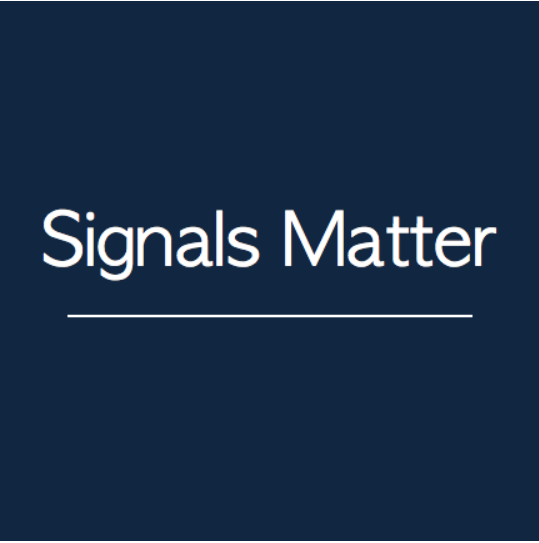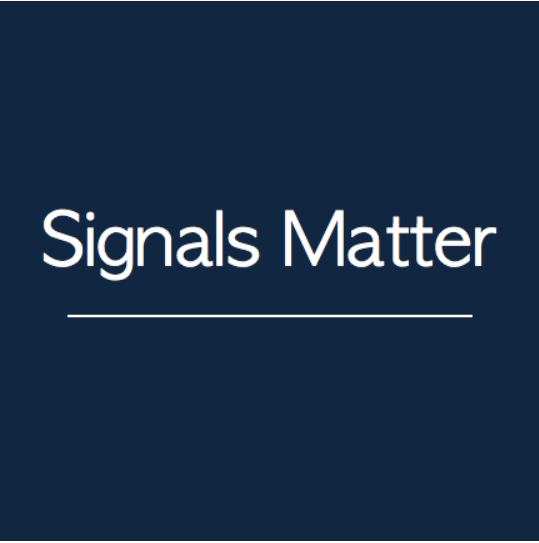
Signals Matters News Letter: The Signals THAT Matter
Broadly, the core and timeless principles behind the infrastructure of Signals Matter Portfolio Construction are carefully discussed here and here.
As for WHAT’S HAPPENING NOW…
Has Powell actually been an angel in disguise and brought US markets from the brink of recession? Are market conditions improving?
Blackrock’s CEO has effectively parroted the views of Yellen and Powell of 2019, declaring that a US recession may never come, as consumer sentiment rises on the news of weaker inflation and a strong service economy. This reminds us of General Westmorland declaring hope in Vietnam despite all the forces converging against such words.
But yes, consumer sentiment is indeed rising…
And yes, inflation is taming…
But Blackrock’s Mr. Rieder qualified his optimism with a statement which the bulls (and likely even Mr. Rieder) don’t wish to see. That is, the foregoing optimism will last “unless there’s some massive shock to the system.”
Toward that end, such a “massive shock” is in many ways already on the horizon as banks contract credit availability in the backdrop of a debt-driven world moving away from the USD and looking increasingly toward an Eastern/BRICS’s-led move toward creating their own trading currency basket outside of the USD and backed by real assets rather than fiat vapor.
Such trends, along with persistent debt cancers, suggest that the current optimism is little more than a calm before a storm.

The Latest US Bond Signals:
Furthermore, the bond market is giving us more to trust, and worry about, than the currently bullish headlines.
Demand for higher-yielding USTs in the overnight reverse-repo markets, for example, is falling while demand for lower yielding USTs in the open auctions is rising, which on its face seems odd. Why, after all, would banks and other institutional investors intentionally seek lower yields?
The answer is telling, for only USTs bought at auction can be re-levered as pledged collateral in a system desperate for more liquidity/leverage to keep functioning. In short: US players are thirsty for more debt rather than rationally seeking more yield. Such behavior speaks to a collateral shortage in a financial system that otherwise lives off collateral/debt. Banks are reducing their derivative exposures and tightening their shrinking balance sheets because they are struggling, rather than thriving, under Powell’s rate hikes.
Such behavior is thus a signal of desperation not optimism. In addition, the still inverted UST yield curve and equally inverted SOFR futures curve is the bond market’s way of telling the world that it expects interest rates to drop going forward, an event which would only occur in a recession rather than recovery.
So, will Powell still raise rates into a debt bubble, or pivot into a recessionary storm?
For now, the ignored message from the trading pits is simple: Be careful.
Swap rates, which typically offer/float at higher rates than the USTs given the lack of actual sovereign collateral, are now trading lower than bond yields. These less yielding swap rates, however, are traded off the balance sheet, and institutional players are deliberately seeking less profit/yield in the swaps trade in order to hide more desperate leverage in their thirst for scarce liquidity.
Thus, the hidden market signals are far less optimistic/bullish than the current verbal signals coming from the sell-side.
As for “decelerating” inflation, that’s hardly a positive sign when the economy is losing demand-pull price moves simply because demand has been quashed by raising rates. In essence, inflation is decelerating because the economy is decelerating, which is precisely what Powell wants.
The question, remains, however, whether Powell can control that deceleration without a hard recessionary landing and an eventual pivot to more inflationary money creation, a question answered below in the article published by Matthew Piepenburg.
The Latest US Stock Signals:
The bullish narrative now coming from the stock market is based largely upon optimistic earnings momentum and EPS data for the S&P 500, which is lead largely by a handful of large tech names who are hiding the pain (and data) felt by hundreds of lagging companies.
Investors must read between the lines of such momentum, as it ignores the larger macro forces pressing against it.
For now, of course, portfolios can ride current trends, but only when carefully, actively and properly hedged for increasing risk—namely collateral shortages, credit contraction, recession signals and a shifting geopolitical trading and currency environment.
Other Key Market Signals:
This August, the BRICS nations along with 20+ other countries seeking to trade outside the USD will be meeting in South Africa to announce what many believe will be a new trading and currency basket backed by real assets in general, and gold in particular, as large swaths of the global financial markets look outside the weaponized USD to settle their trade arrangements.
Such an event will have lasting ripple effects on the USD, the UST and the US markets. Signals Matter will be watching and tracking this event carefully.

Even More
For greater detail on the signals we track, including proprietary recession/ ”storm tracker” indicators, cash positions and, of course, specific portfolio allocations tailored to individual risk profiles, Signals Matter invites you to become a member here.
Signals Matter Market Reports generally reflect the company’s long-term macro views and are posted free of charge each week at www.SignalsMatter.com, on LinkedIn, and directly to your inbox by Signing Up Here. Our Portfolio Solutions are generally geared to shorter timeframes, may therefore differ from our longer-term perspectives, and are available to Subscribers that Join Here. For three ways to engage with us, please click: 3 Ways to Engage.




